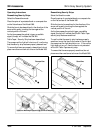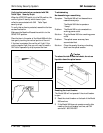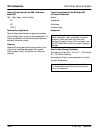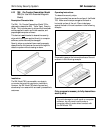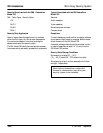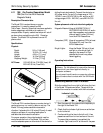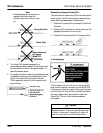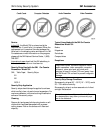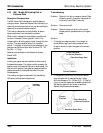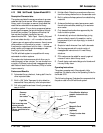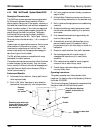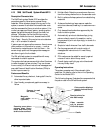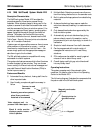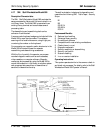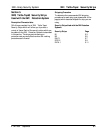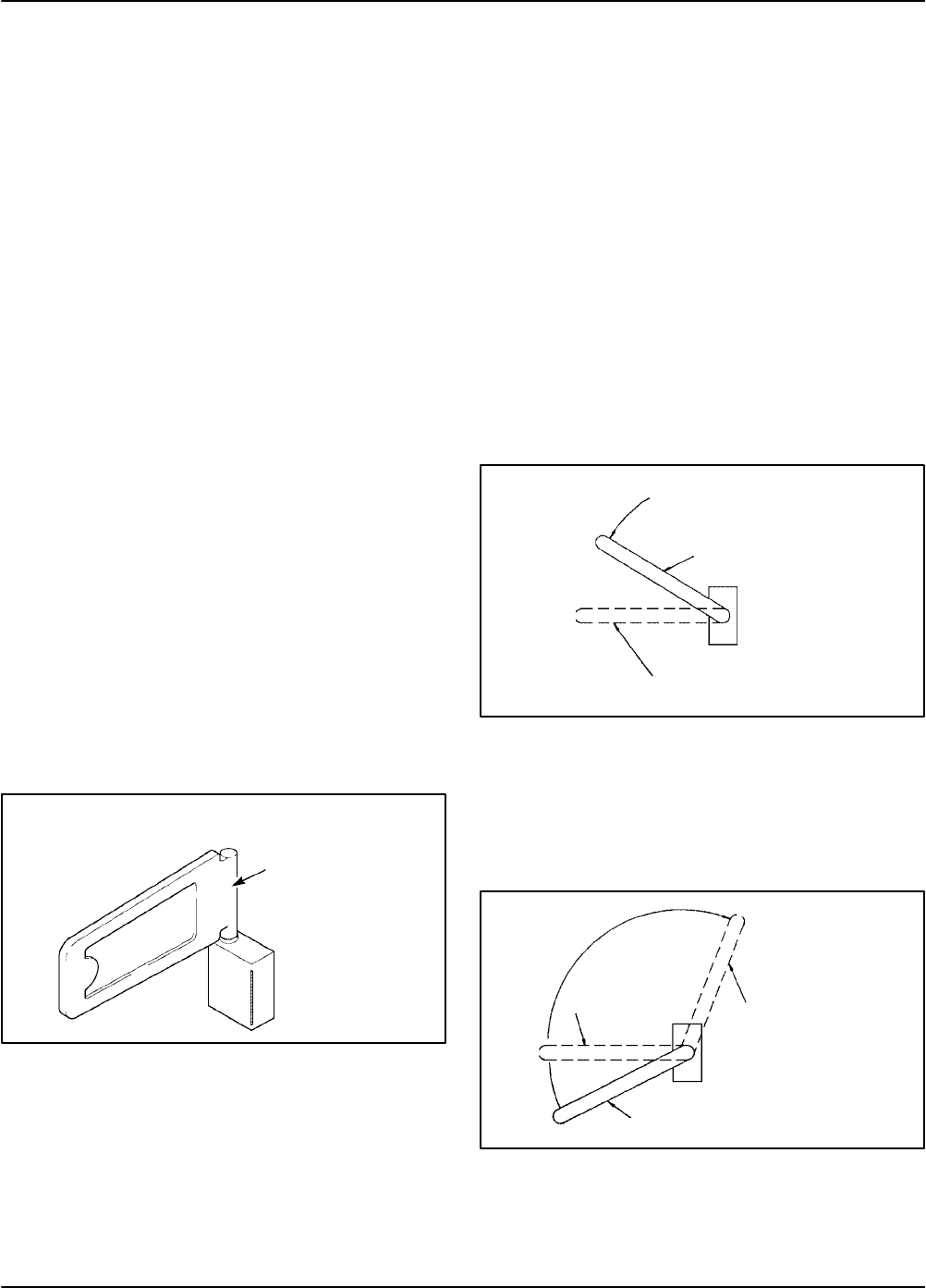
3M Accessories
3M Library Security System
4-30
E 3M 1999 September
4.12 3Mt Model 494 Locking Exit or
Entrance Gate
Description/Characteristics
The 3M Model 494 is designed to restrain patrons
during an alarm. Gates are shipped from the factory to
open with a clockwise rotation but may be modified to
open with a counterclockwise rotation.
The l ocking mechanism is controlled by an alarm
signal and power from the detection system.
When a strip is detected in the detection system and
an alarm is created, the exit gate will lock in the
closed position blocking patron travel through the exit
corridor. The gate remains l ocked for the alarm
period. If the gate i s locked during an emergency, the
gate arm can be forced open with a force of 15 -- 25
lbs. [6,8 -- 11,3 kg].
Gates are not available on the Detection System
Model 3500.
Installation
Locking exit gates may be installed on either side of
the detection system. For single corridor systems, the
gate box may be located at the end of either panel. For
dual corridor systems, two gates are required and the
gate boxes must be located at the ends of the two
outside panels.
The l ocking exit gate is designed t o be installed by
3M factory trained service personnel.
Locking
Exit Gate
Troubleshooting
Problem: Gate will not lock or remains locked. Gate
closes too quickly (less than 4 seconds) or
too slowly (more than 7 seconds).
Solution: Place service call.
Problem: Gate arm does not return to the correct
closed position (perpendicular to the gate
base).
Solution:
1. If the gate arm does not return far enough, as
shown below, apply sufficient pressure in the
direction shown to return the gate to the correct
position.
Force Gate Arm
to Correct Position
Gate Arm Stops Here
Correct Position
2. If the gate arm returns too far, as shown below,
open the gate until it reaches the stop. Apply
sufficient pressure (15 -- 25 lbs. [6,8 -- 11,3 kg] of
force) to move the gate arm an additional amount.
Release t he gate arm and check its position.
Repeat the procedure as necessary.
Force Gate Arm
to Correct Position
Correct
Position
Gate Arm Stops Here



